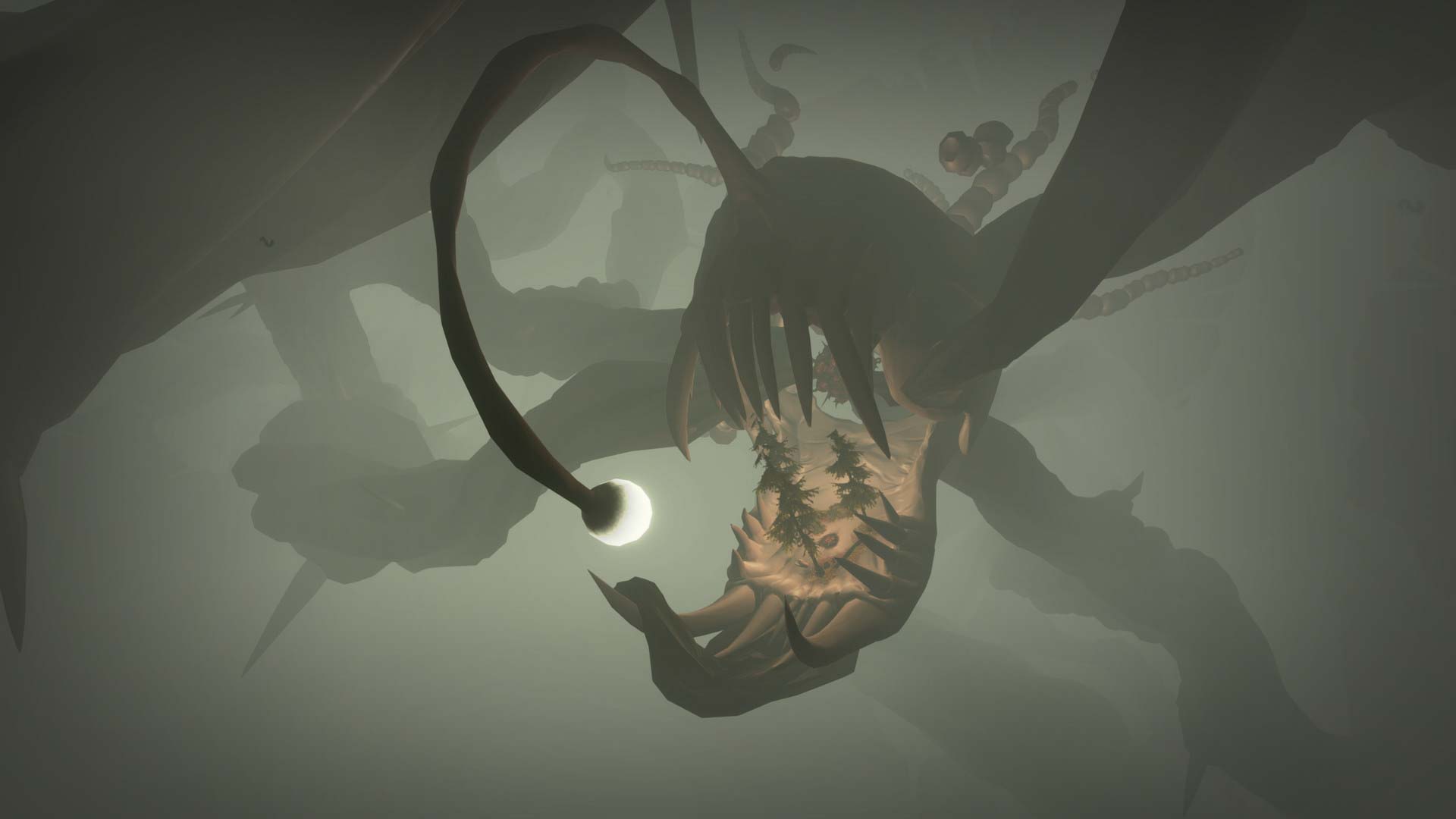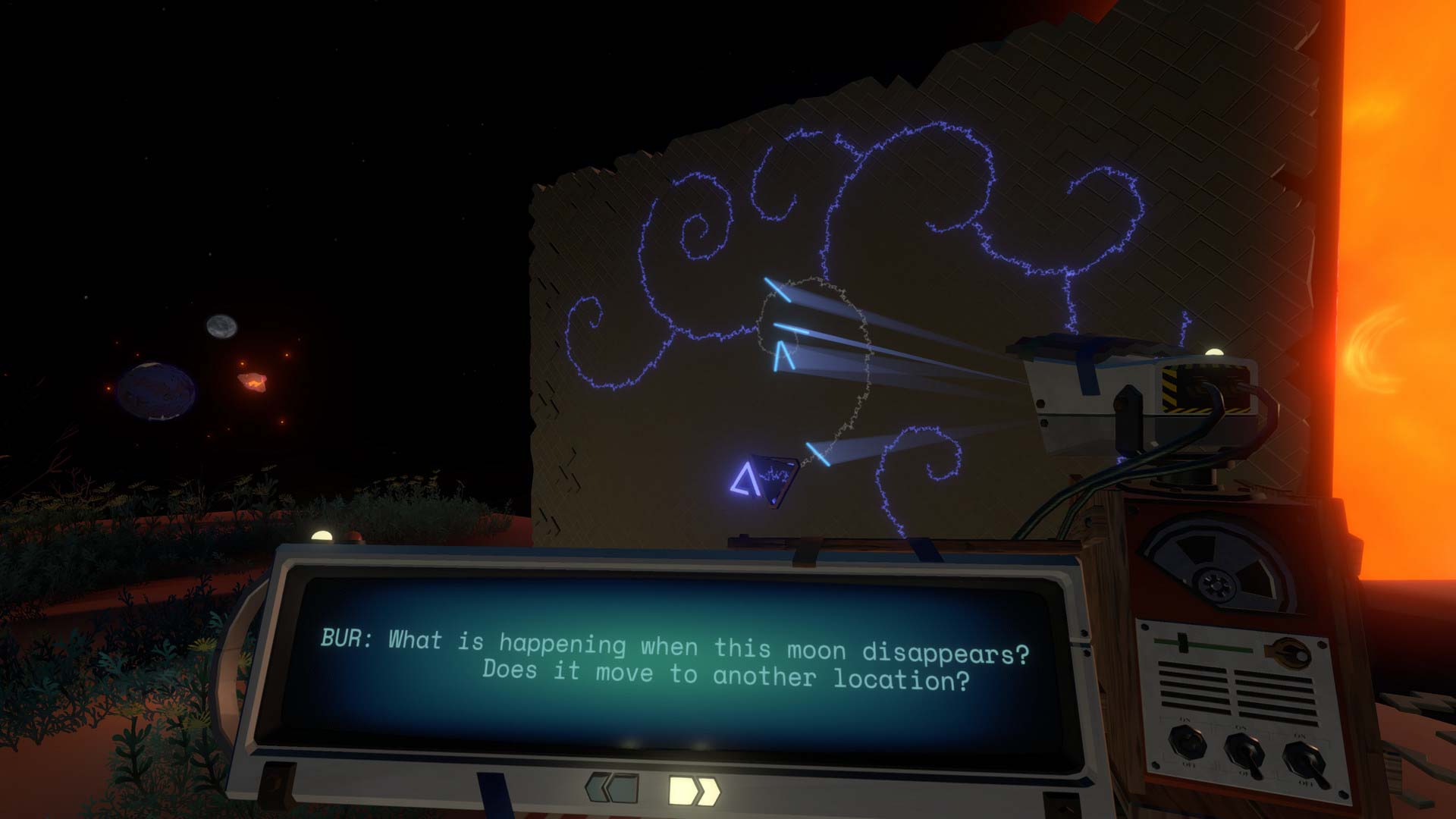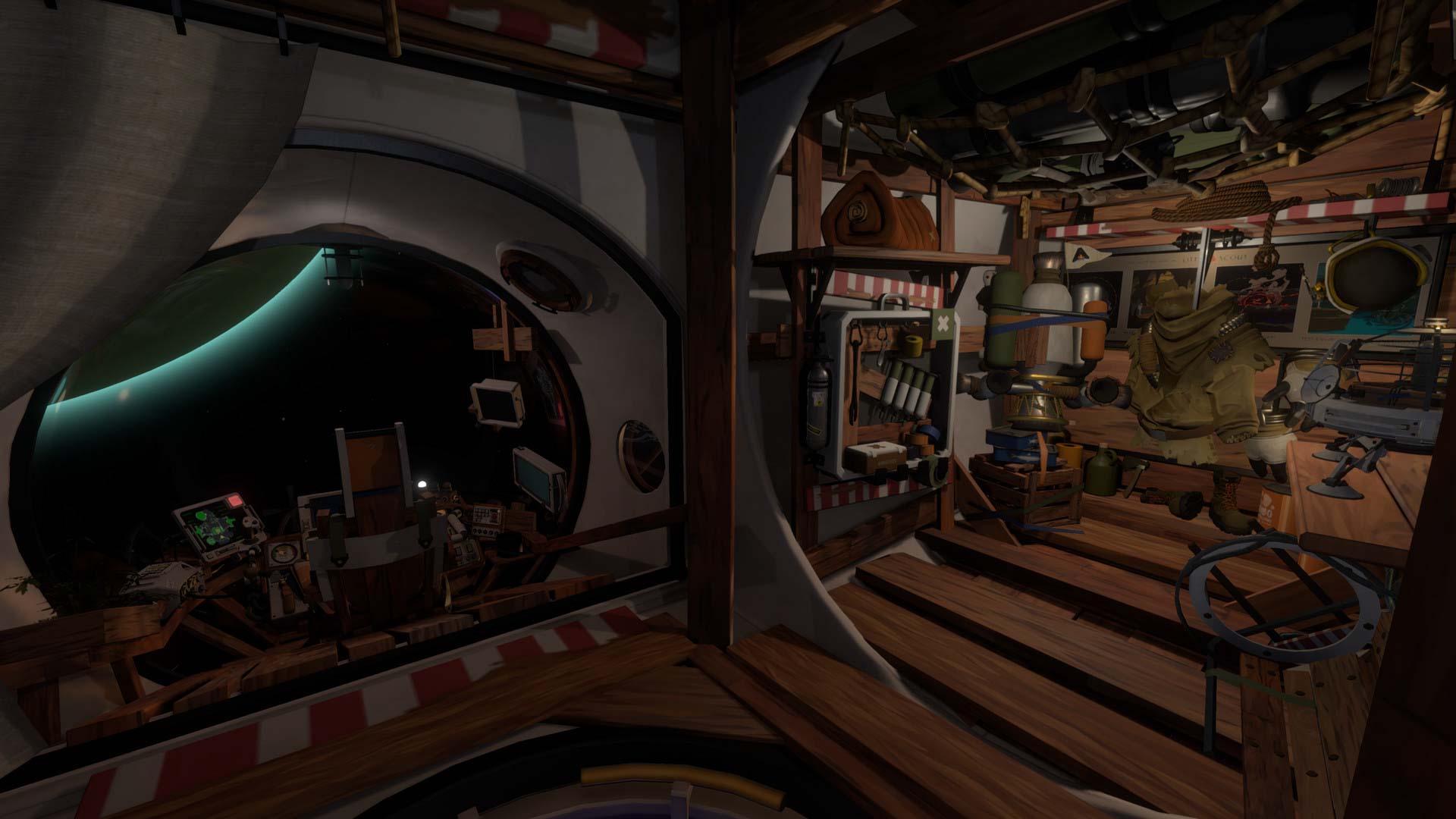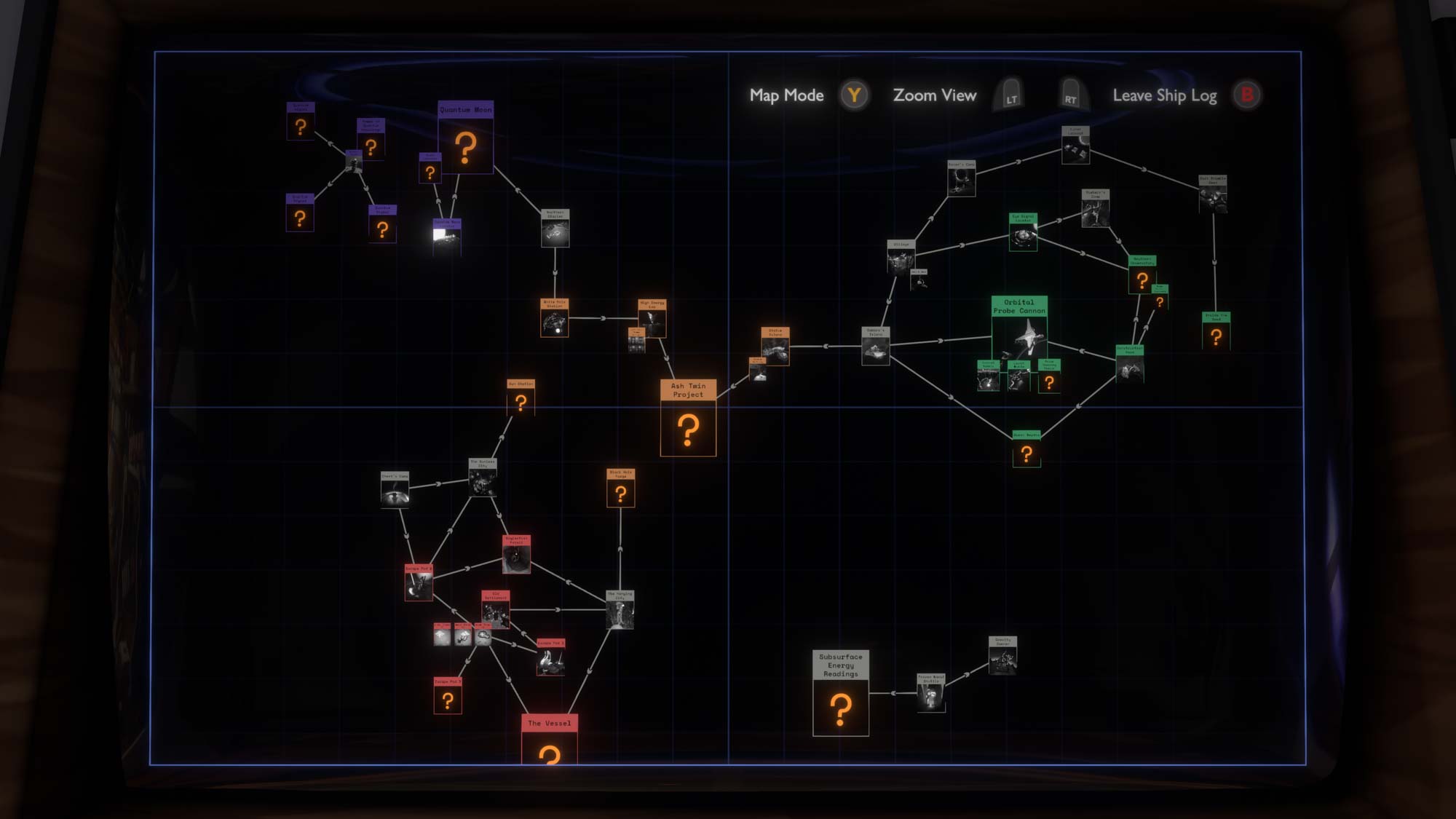Tom's Guide Verdict
Outer Wilds is an indie space exploration game, with a fascinating and deadly mystery to unravel at the heart of the universe. The experience is both addicting and charming
Pros
- +
Nonlinear narrative and exploration
- +
Charming visuals
- +
Impressive sound design
- +
Engrossing mystery
Cons
- -
Faulty autopilot
- -
Tricky movement controls
Why you can trust Tom's Guide
Platform: PC, Xbox Series X/S (reviewed), PlayStation 5, Nintendo Switch, Xbox One, PlayStation 4
Price: $25
Release Date: June 18, 2020 / September 15, 2022 (PS5/Xbox Series X version)
Genre: Open-world action/adventure
Outer Wilds is a charming indie space exploration game, set in a solar system on the brink of disaster. Your objective, as the latest member of the Outer Wilds Ventures space program, is to visit the ancient Nomai ruins around the solar system, and translate their messages with your brand-new translation tool. Unfortunately, you have a tight time limit before the solar system implodes.
Annapurna Interactive and Mobius Digital’s little game about a deadly time loop is an experience that leans heavily on its nonlinear narrative, and its thrilling scientific discoveries. There are plenty of clever logic puzzles to solve, all set against a backdrop of certain doom. The game’s only major flaw lies in the ship’s autopilot function, which has a tendency to crash into various celestial bodies on its way to a set location.
Outer Wilds had overwhelmingly positive reviews at its initial launch, and its recent update for PC, Xbox Series X/S and PlayStation 5 has only made the game smoother. It’s easy to see why this indie game is one of the best in its class. We’ll touch on what makes the game special in this Outer Wilds review.
Outer Wilds review: Gameplay
In Outer Wilds, you start each gameplay run when you wake up on the day of your first space launch. From there, you have 22 minutes to explore the solar system before the sun goes supernova and destroys all life in the area. However, before you live long enough for the supernova to kill you, you have to first survive your ship’s shoddy construction materials, a couple of black holes, a volcanic moon that rains destruction, a planet with finite surface integrity, crushing towers of sand, quantum entanglement and the invisible-but-lethal ghost matter.

In order to get out of the loop and complete the game, you need to solve several logic puzzles designed around the 22-minute time loop. Certain areas are accessible only during specific portions of the loop. However, you can travel anywhere in the solar system at any time to collect clues about the mysterious Eye of the Universe, which drives the plot.

Like any good exploration game where you die in horrible ways, over and over, you need to keep track of a few resources, such as oxygen supply and fuel levels for your jetpack-powered space suit. While in space, or on planets with low-gravity, you need to rack your direction and velocity as well, or you can drift out into space. The game's three-dimensional movement controls require some practice to use effectively.
The biggest gameplay flaw in Outer Wilds is the ship’s autopilot function. As you might expect from a spaceship made from spare parts and held together with the science-fiction equivalent of duct tape, the autopilot is not infallible. It does a great job of moving in a straight line toward a given destination, but that’s really all it can do. All of the planets are pretty close, so the autopilot's tendency to throw you into the nearest volcanic moon is obnoxious, but not game-breaking.

The game has no combat, and your exploration tools are limited to a translator, a scout camera and a signal scope. As such, most of the puzzles are exercises in logic rather than traditional video challenges with keys, pressure plates, or levers. Outer Wilds is not a game you can brute-force your way through, so it forces you to stop and observe your surroundings.
Get instant access to breaking news, the hottest reviews, great deals and helpful tips.
This combination of exploration, clue-gathering, and puzzle-solving makes for an addictive adventure that you won’t want to put down.
Outer Wilds review: Story
In the Outer Wilds, you'll learn the plot through your own experiences, and through finding clues about the Eye of the Universe. Thus, the story unfolds in a nonlinear fashion through ancient Nomai writings and recordings, as well as dialogue with non-player characters (NPCs).
To support its nonlinear structure, the game relies on a tracking mechanism in the ship’s log. You can read your ship’s log entries on the “planet by planet” map screen, or through the rumor screen. For an in-depth look at what you’ve learned so far, the rumor window is the more useful component. And like any good rumor tracker, Outer Wilds gives you a good old-fashioned conspiracy theory web.

The web functions as a story component, a handy part of the game’s user interface and a mechanical set piece, all at once. The more information you pick up, the larger and more entangled the web becomes. That's because every piece of information you uncover is connected in some way to the Eye of the Universe.
As Outer Wilds is entirely self-guided, with all content theoretically available at the start of each loop, that rumor web evolves for each player in a unique fashion. And, unless you consult a guide, there’s only a small note on key entries that alerts you to further discoveries. As such, there’s no reliable way to know when you’ve missed information.
Truthfully, you don’t need to know everything to complete the game in a satisfactory manner. That's one of the game’s key strengths. You set the cadence for your own exploration, and once you have the key parts of the mystery solved, you can either stick around or head straight to the end. Essentially, you chart the course of your own salvation.
Outer Wilds review: Visuals and sound
Untangling the mysteries of the universe isn’t the only reason to keep playing Outer Wilds. Between roasting marshmallows and chatting with your fellow explorers, there’s enough cute entertainment to keep you occupied for at least a few loops, simply sitting at campfires and listening to some catchy tunes. The different planets each have several fascinating locations that you can experience (and find new ways to die in). And there’s always a certain joy in watching the sun implode in real time from any vantage point.

However, the real gem of Outer Wilds isn’t the satisfaction of solving a mystery, or exploring new worlds, or even the pride of solving difficult, planet-spanning logic puzzles. As much as the planets can each be a visual feast, the true genius of the game lies in its use of sound. Much of the music in the game comes from NPCs. Each of your fellow explorers either whistles or travels with an instrument, and you can listen to them with your signal scope, or by hanging around within earshot. Exploring major Nomai ruins and learning key pieces of information can trigger a haunting melody. Certain locations have their own background tracks, and specific events can trigger other songs.
These moments feel even more impactful, as the rest of your exploration takes place in relative quiet, with just the sound of your own thrusters and breathing to keep you company. The way the game uses the tracks “End Times” and “22 Minutes” to signal the end of the time loop is indicative of Outer Wilds' unique sound design. The tracks serve as a warning to end your exploration, as well as a gorgeous backdrop to the sun’s supernova, should you find yourself gazing out into space at the end of a loop.
Outer Wilds review: Verdict
Much of what Outer Wilds does well can also make it daunting, especially for players who prefer guided gameplay or more active storytelling. Interstellar exploration can also be difficult, as you need to orient yourself in all three dimensions while accounting for trajectory and velocity differences between yourself and the target that you’re trying to investigate.
The logic puzzles themselves sometimes require unorthodox thinking, which can make things difficult for players who are more accustomed to traditional solutions. But for those who are up to the challenge, Outer Wilds has plenty to offer, between its mysteries, its mix of science and fantasy elements, its killer soundtrack and its charming indie-style visuals.
Frankly, it's hard to recommend Outer Wilds enough. The game came out in 2019 to widespread acclaim, and it's only gotten better since then. Now that the game is available on multiple platforms, included in Xbox Game Pass, and doesn't cost much, you really can’t go wrong.

